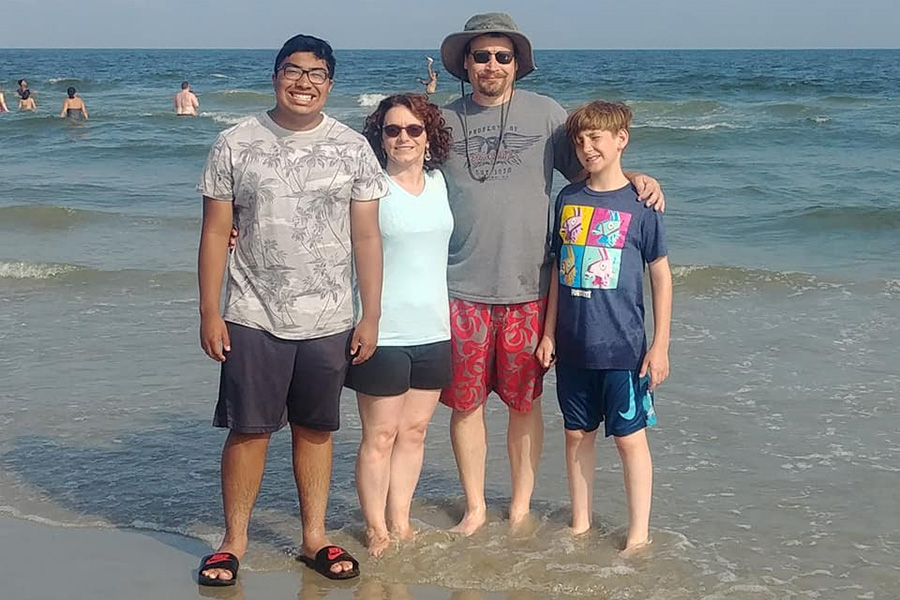Our Family’s Adoption Odyssey

This November my older son turned 18 years old. It was a milestone for all of us — especially considering that, 20 years ago, I wasn’t sure if I would ever be a mom.
My husband and I got married in October 2000. Two years later, we felt it was time to have a baby. What we had instead was sadness, frustration, an ectopic pregnancy, and a miscarriage. Our infertility specialist couldn’t explain why we couldn’t have a baby. After a year and half with no answers, I had had enough.
We attended an information session on international adoption. The speakers mentioned the different countries that were open to adoption by parents in the U.S. When they spoke about Guatemala, something clicked. And so my husband and I began our adoption odyssey.
Navigating a Mountain of Paperwork
To be approved for adoption, we needed letters of recommendations from close friends, employment histories, and physical clearances from our doctors. We needed bank statements and copies of tax forms. We had to write our autobiographies and talk about what kind of parents we wanted to be. We had interviews with social workers. We got fingerprinted for criminal background checks. And just when we thought we were done, all the paperwork had to be translated into Spanish. The file, at one point, was about five inches thick.
Then, on November 10, 2004, I got an email at work saying, “Meet Baby Pownall!” I called my husband, who also works at Independence Blue Cross, and told him to come up to my desk. We opened the email’s attachment and saw a photo of the little boy who would become our son. Parenthood was finally happening!
Waiting for the Call
The next eight months were a mix of excitement and anxiety. First, we turned to online support groups to help us get through it; then we started our own support group. This allowed us to make real-life, personal connections with other families from our adoption agency who were also waiting for “the call” to bring home their children.
When that call finally came and we flew to Guatemala City, four other families from our support group were also there, so we did everything together. We ate breakfast in the morning, swam in the hotel pool with the kids in the afternoon, and learned how to change diapers, burp babies, and wash onesies in a hotel sink.
We traveled to Antigua — the former capital of Guatemala — and were amazed by the architecture of the centuries-old city and by the wild parrots that lived in its gardens. My Spanish improved immensely, thanks to the very patient hotel workers who helped me as I stumbled through their language. Being in a foreign country, surrounded by our community of friends, was a wonderful way to start motherhood.
After about three weeks, our paperwork was finalized, and we came home to the U.S. with our son.
Adopting Our Second Son
About three years later we decided to adopt again. This time we chose to adopt through the U.S. foster care system. The hefty paperwork requirement was about the same, minus the translations.
Our second son came to us as a four-year-old — which, as we soon learned, is very different than adopting an infant. Although he could walk, talk, and feed himself, he also had memories of his foster family. He was visibly confused about moving between households. He bonded very quickly to my husband but didn’t easily connect with me. That made me very sad.
A New Set of Parenting Challenges
Looking back, I wasn’t as prepared as I should have been for the emotional impact of adoption for our younger son. He had experienced deep losses that he was struggling to process.
The strategies we had used to nurture and create stability for our older son didn’t work for our younger son because they were at two different developmental stages. Our younger son would tell us he missed his grandma and older sister and ask us when he could see them. That made me feel like a failure as his mom. My husband felt guilty because he had a strong bond with our new son that I could not replicate. These tensions affected our older son, too.
Luckily, the adoption community is full of resources — because while adoption is a great thing, it can also trigger intense emotions in both children and adults.
It took us a while, but with the help of some therapists, the four of us learned how to build trust, and we now function well as a family.
Parenting Adopted Versus Biological Children
There have been some bumps in the road along the way. But my friends who have their own biological children have always assured us that these bumps are part of parenting any child.
Of course, our children have more complex questions about things like their birth parents and their racial and ethnic identities. But as a family, we also have plenty of “normal” kid struggles with homework, friends, and fights over who gets the Xbox…and soon, who gets to use the car.
Adoption Has Been a Gift
I’m grateful for the many communities that supported us on our journey to become a family. Our employer’s adoption leave policy allowed us to take time off to bond with our children, and they provided a generous stipend that helped cover some of our adoption costs.
We are still friends with the adoptive parents from our support group. Our boys have grown up together knowing other families that in some ways are just like theirs — but in other ways, showed them how beautifully diverse a family can be. Teachers, guidance counselors, social workers, and therapists were instrumental in helping us develop and reinforce the bonds of safety and trust that are necessary for strong families.
And, most of all, we have to thank our sons’ birth parents, who made unbelievable sacrifices and entrusted us to raise their children. All these people are the reasons that my husband and I are able to call ourselves parents.



